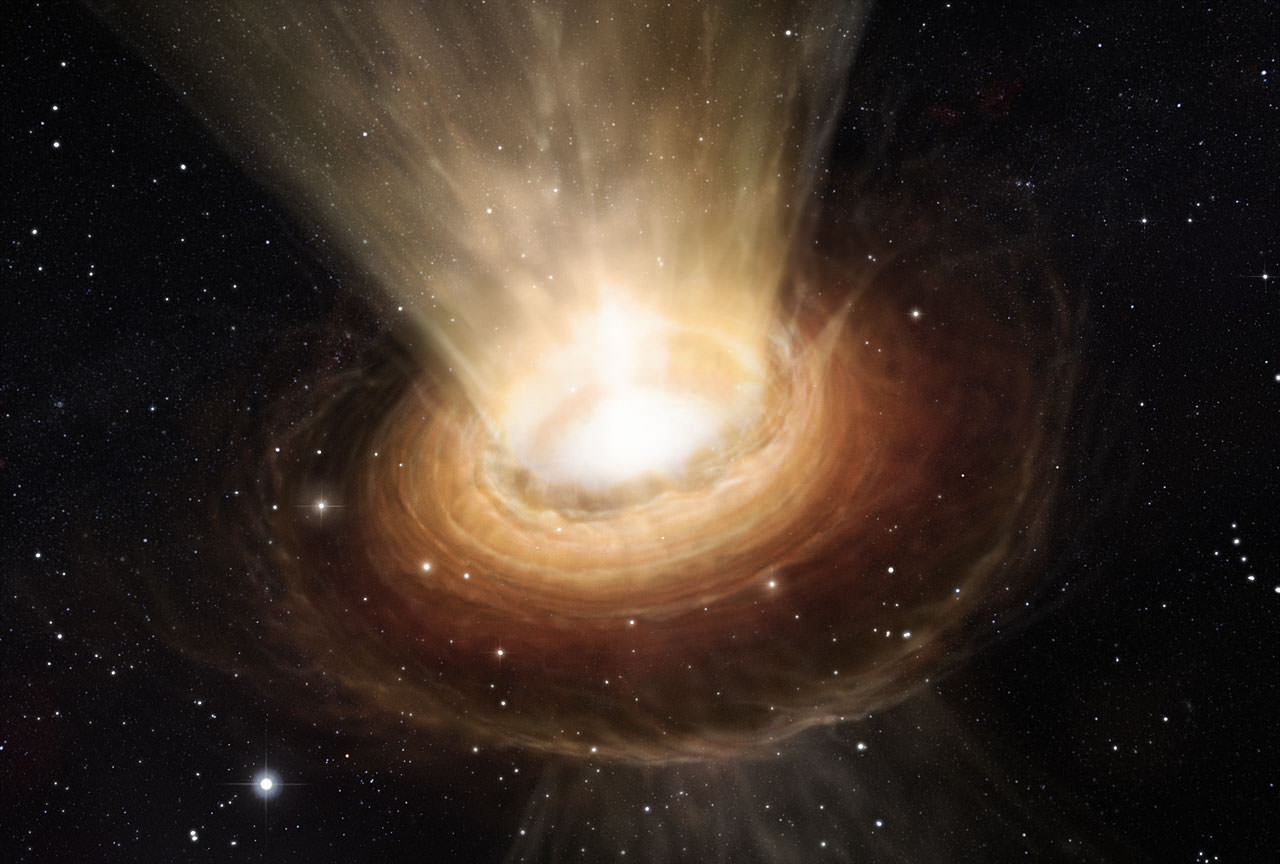Over the years, researchers have taken myriad observations of black holes and their environs, but now ESO’s Very Large Telescope Interferometer is giving us the most detailed look of the dust around a black hole at the center of an active galaxy ever obtained. Originally expected to be contained within the ring-shaped torus around the black hole, the observation held a surprise as astronomers discovered that a significant amount of the dust was located both above and below the torus. What can this mean? According to the latest findings and contrary to popular theory, it is possible the dust is being evacuated from the region as a cool wind.
For the last two decades, astronomers have discovered that nearly all galaxies harbor a black hole at their hearts. In many cases, these monsters increase in size by accreting matter from the immediate vicinity. This, in turn, is responsible for the creation of active galactic nuclei (AGN), one of the most energetic objects in the Universe. Surrounding the super-luminous giants are rings of cosmic dust which originate from space – drawn in like water swirling down a dark drain. According to theory, the intense infrared radiation exerted by AGN must have originated from these dusty eddies.
Thanks to the powerful eye of the Very Large Telescope Interferometer (VLTI) at ESO’s Paranal Observatory in Chile, astronomers have now seen something new in a nearby active galaxy cataloged as NGC 3783. While they observed the expected hot dust clocking in at some 700 to 1000 degrees Celsius, what they also observed confounded them… Huge amounts of cooler dust both above and below the main torus.
As Sebastian Hönig (University of California Santa Barbara, USA and Christian-Albrechts-Universität zu Kiel, Germany), lead author of the paper presenting the new results, explains, “This is the first time we’ve been able to combine detailed mid-infrared observations of the cool, room-temperature dust around an AGN with similarly detailed observations of the very hot dust. This also represents the largest set of infrared interferometry for an AGN published yet.”
Is this a black hole teething ring? From their observations, the researchers suspect the newly-discovered dust is flowing outward from the central black hole. This means the wind most likely plays a critical part in the tangled relationship of both the black hole and its surroundings. Apparently the black hole pulls immediate material into it, but the incredible amount of radiation this produces also seems to be pushing it away. Scientists are far from clear as to how these two processes work together, but the discovery of this dusty wind could lead to a better understanding of their evolution.
To get the resolution needed to study the core area of NGC 3783, astronomers needed to use the combined power of the Unit Telescopes of ESO’s Very Large Telescope. Through this union, an interferometer is created – one capable of “seeing” with the equivalent of a 130-meter telescope.
Another team member, Gerd Weigelt (Max-Planck-Institut für Radioastronomie, Bonn, Germany), explains, “By combining the world-class sensitivity of the large mirrors of the VLT with interferometry we are able to collect enough light to observe faint objects. This lets us study a region as small as the distance from our Sun to its closest neighbouring star, in a galaxy tens of millions of light-years away. No other optical or infrared system in the world is currently capable of this.”
What do these new observations mean to the world of astronomy? It might very well change the pattern of how we currently understand AGN. With proof that dust is being expelled by intense radiation, new models must be created – models which include this recent information of how dust can be distributed.
Hönig concludes, “I am now really looking forward to MATISSE, which will allow us to combine all four VLT Unit Telescopes at once and observe simultaneously in the near- and mid-infrared — giving us much more detailed data.” MATISSE, a second generation instrument for the VLTI, is currently under construction.
Original Story Source: ESO News Release.

